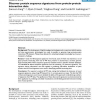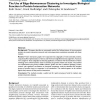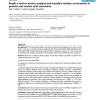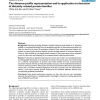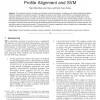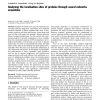BMCBI
2005
13 years 4 months ago
2005
Background: The development of high-throughput technologies such as yeast two-hybrid systems and mass spectrometry technologies has made it possible to generate large protein-prot...
BMCBI
2005
13 years 4 months ago
2005
Background: This paper describes an automated method for finding clusters of interconnected proteins in protein interaction networks and retrieving protein annotations associated ...
BMCBI
2005
13 years 4 months ago
2005
Background: Cellular processes require the interaction of many proteins across several cellular compartments. Determining the collective network of such interactions is an importa...
BMCBI
2005
13 years 4 months ago
2005
Background: The interacting residues of protein and nucleic acid sequences are close to each other
BMCBI
2005
13 years 4 months ago
2005
Background: Protein-protein association is essential for a variety of cellular processes and hence a large number of investigations are being carried out to understand the princip...
BMCBI
2005
13 years 4 months ago
2005
Background: Detecting homology between remotely related protein families is an important problem in computational biology since the biological properties of uncharacterized protei...
BIOINFORMATICS
2005
13 years 4 months ago
2005
Motivation: Most of the existing methods in predicting protein subcellular location were used to deal with the cases limited within the scope from two to five localizations, and o...
TCBB
2008
13 years 4 months ago
2008
The subcellular locations of proteins are important functional annotations. An effective and reliable subcellular localization method is necessary for proteomics research. This pap...
NCA
2006
IEEE
13 years 4 months ago
2006
IEEE
Scientists involved in the area of proteomics are currently seeking integrated, customised and validated research solutions to better expedite their work in proteomics analyses and...
NC
2006
13 years 4 months ago
2006
Biochemical reactions taking place in living systems that map different inputs to specific outputs are intuitively recognized as performing information processing. Conventional wis...
